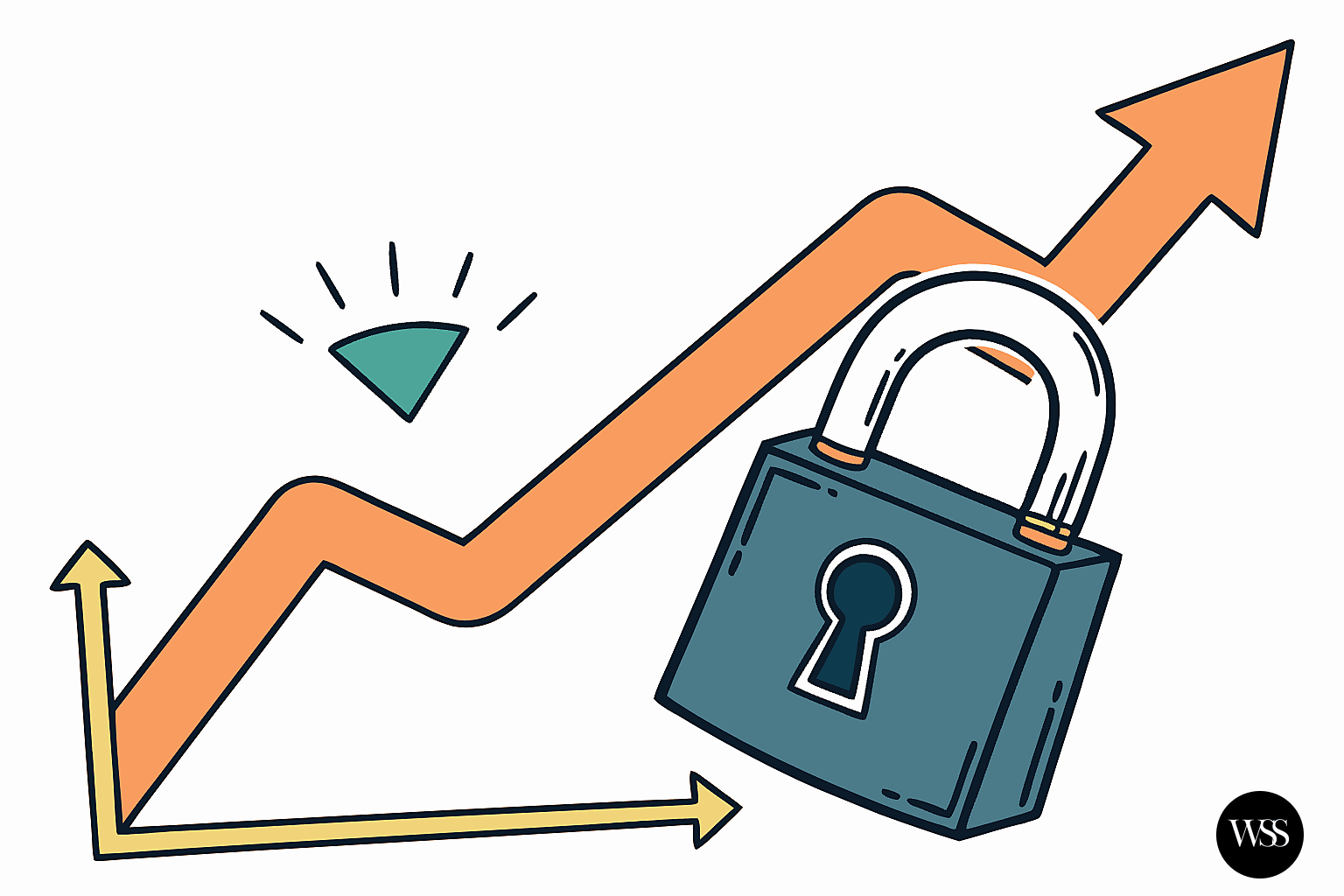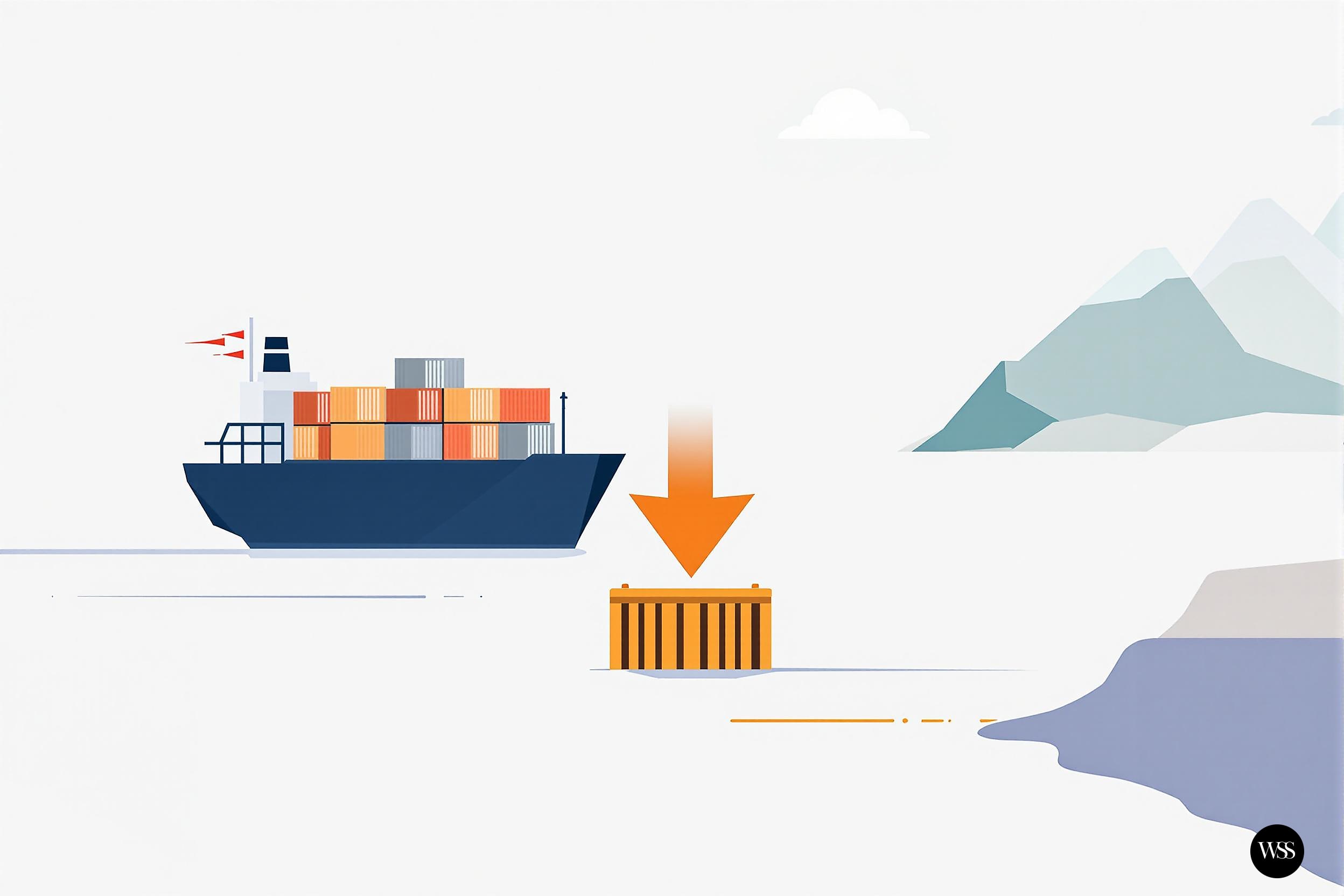Trump China Deal Unlocks Market Rally
Positive news on US-China trade negotiations sparks market optimism. Learn how potential tariff reductions could boost imports, help businesses, and impact the broader economy. Understanding what this means for investors and consumers.

The market is showing signs of life, a sharp turn from recent anxieties. The source? Renewed optimism stemming from US-China trade discussions in Geneva this past weekend.
Insights
- Recent US-China trade talks in Geneva have significantly eased market tensions, with US tariffs on Chinese goods dropping from a high of 145% to 30%.
- The deal is expected to release pent-up inventory, potentially boosting short-term GDP, while increased imports from China could help temper domestic inflation.
- Despite positive headline news, underlying economic factors like Treasury yields and corporate earnings resilience remain critical for long-term market direction.
- Investors should focus on detailed analysis of the trade deal's terms rather than reacting to initial market euphoria, as partial measures may still pose challenges.
- Long-term financial strategy demands a clear head and readiness to act on genuine opportunities, not just chasing momentary market shifts.
Trade Winds Shifting?
Word out of Geneva, where the latest US-China trade negotiations concluded in May 2025, suggests a change in the wind. Officials described the discussions as "productive." We've all heard that diplomatic boilerplate before, haven't we?
This time, however, a Chinese negotiator offered a more flavorful assessment. When pressed on the timing for a joint statement, the response was, metaphorically speaking, "If the dish is delicious, the timing doesn't matter."
The implication was clear: substantive news is forthcoming, and it will be "big news and good news for the world."
Markets reacted with enthusiasm. Following the May 12th announcement, US stocks climbed significantly, with major indices jumping over 2% as pre-market futures had signaled strong positive sentiment. This optimism comes after a period of considerable tariff-induced turbulence earlier in the year, a "tariff beatdown" that saw broad duties applied.
You'll recall the baseline 10% tariffs imposed in April 2025 on a wide array of goods. By May 2025, the average effective tariff rate had climbed to a steep 17.8%, according to the Yale Budget Lab.
This was compounded by even higher rates; the US had imposed tariffs of up to 145% on certain Chinese goods, while China retaliated with duties up to 125% on US exports. The administration had previously cited broad executive powers for such trade actions, often pointing to trade deficits and what it termed unfair practices.
Uncorking the Bottleneck
If this new China deal genuinely involves a significant rollback of these tariffs—and reports indicate US tariffs on many Chinese goods have now been reduced from as high as 145% down to 30%—what are the immediate consequences?
Consider the logistical snarls. Companies have been warehousing enormous amounts of inventory, some reportedly in places like Canada, to sidestep the harshest direct-from-China tariffs. Some of these goods, if imported directly, faced those crippling rates, now substantially lowered.
A tariff reduction of this magnitude could unleash a torrent of these stockpiled goods into the US market.
Truckers will suddenly find their schedules full. Retail shelves will see rapid restocking. Corporate balance sheets will reflect a surge in inventory levels.
This burst of activity could provide a noticeable, if perhaps temporary, lift to Gross Domestic Product (GDP) figures. It represents movement, transactions, and economic churn.
And there's an interesting potential side-effect: China is currently experiencing weak internal prices, effectively exporting deflation. An increase in imports from China, spurred by lower tariffs, might actually help to cool domestic inflation here. A welcome development, if it materializes.
"You must gain control over your money, or the lack of it will forever control you."
Dave Ramsey Personal Finance Expert
The Devil in the Details
But let's not break out the champagne just yet. The specifics of any trade agreement are what truly matter.
What does a "positive deal" actually entail beyond the headline reduction from 145% to 30% on key Chinese goods? A complete return to pre-tariff norms across the board? That seems overly optimistic, though it would certainly ignite further market enthusiasm.
More realistically, we're looking at a partial reduction. While the drop to 30% is significant, it's still a substantial tariff compared to historical levels. China, in turn, has reportedly reduced its retaliatory tariffs on US goods from 125% to 10% for a 90-day period. The market's initial positive reaction needs to be weighed against these remaining duties.
Remember, economic models offer varied perspectives on tariff impacts. The Budget Lab at Yale, in its May 2025 analysis, estimates that all tariffs implemented in 2025 are projected to raise approximately $2.7 trillion in revenue between 2026 and 2035.
However, they also project $394 billion in negative dynamic revenue effects and a drag of 0.7 percentage points on real GDP growth over that period. This underscores the complex trade-offs: tariffs generate government revenue but also act as a tax on consumers and businesses, potentially slowing economic expansion.
Is this entire episode a sophisticated negotiation strategy, designed to extract concessions before returning to a more conventional trade environment? Or is the administration genuinely focused on tariff revenue, perhaps to fund other fiscal initiatives?
That remains the pivotal question, and the answer isn't immediately clear.
Beyond the Headlines: Other Market Forces
While the spotlight is firmly on US-China trade, other critical factors are at play. Don't lose sight of them.
Treasury yields, for instance, have been on an upward trajectory. The 10-year Treasury yield, a key benchmark, has been hovering around 4.35% as of mid-May 2025.
This is generally positive for large corporations less dependent on debt financing. Conversely, it creates headwinds for smaller businesses, individuals with variable-rate loans, and sectors sensitive to interest rate fluctuations. Higher yields translate to increased financing costs across the economy.
Then there's the pharmaceutical sector. There has been talk of a potential executive order aimed at reducing drug prices, with figures like 30-80% cuts being mentioned. How this would be achieved is unclear, with some speculation about the use of "sectoral tariffs" – duties targeted at specific industries.
This sounds like a complex maneuver with potentially unpredictable consequences. For now, it remains more noise than signal until concrete proposals emerge.
It's possible these various threads are interconnected. Perhaps we'll see a "good news" narrative on China trade, with a partial tariff rollback, juxtaposed with "tough action" rhetoric on pharmaceuticals or other sectors like semiconductors. The overall strategy appears to be one of dynamic negotiation on multiple fronts.
"Successful investing involves doing a few things right and avoiding serious mistakes."
Jack Bogle Founder of The Vanguard Group
Analysis
So, what's the intelligent approach in this environment? It boils down to patience and discipline. The market has already recovered the ground lost during the initial tariff shock.
Those who maintained their composure, perhaps employing risk management tools like trailing stops – which, by the way, are not foolproof and require careful calibration in volatile conditions – have seen their patience rewarded in this sharp recovery.
However, the uncertainty hasn't vanished; it has merely shifted its focus. A complete, zero-tariff resolution across all fronts still seems like a long shot. A partial deal, like the one announced, is the more probable scenario.
The market's sustained reaction, once the initial euphoria subsides and the full implications of the remaining 30% tariffs (and China's 10% reciprocal duties) are digested, will be crucial.
If this is primarily a negotiation tactic, a gradual return to lower tariffs could indeed see markets attempt to "look through" the economic disruption experienced earlier in the year.
Companies might take the opportunity to "kitchen sink" their Q2 earnings – attributing any weakness to the tariff saga – and then issue more optimistic guidance for Q3, assuming a clearer path forward. This is a common playbook.
But what if significant tariffs, even at the reduced 30% level, remain a fixture on US-China trade? And what if China's 10% retaliatory tariffs persist beyond the initial 90-day window or are replaced by other measures? The market might then surrender some of its recent gains. The key is to scrutinize the details, not just the headlines.
The resilience of the labor market through this period of trade tension and shifting policy will be a critical indicator. Can the economy achieve the much-discussed "soft landing"?
We should gain more clarity on this through upcoming economic data releases, such as inflation reports, employment figures, and Federal Reserve commentary expected through the summer, particularly around August 2025. These will provide a clearer picture of the underlying economic health.

Final Thoughts
The fundamental economic currents – inflation trends, interest rate movements, and the strength of corporate earnings – remain paramount, irrespective of the prevailing trade winds.
If a genuinely comprehensive and stable trade deal materializes, markets will likely attempt to look past the Q2 economic speed bump. If the deal proves to be more limited or its benefits are offset by other restrictive measures, expect continued market choppiness.
Your strategy should be grounded in fundamental analysis and a clear understanding of the risks within your portfolio. Don't get swept away by headline-driven euphoria or panic. The financial arena is always in flux, and clear thinking is your best asset.
Winners in this environment won't be those making impulsive bets or hiding from volatility. Whether we navigate towards a smoother economic path or face further turbulence, a well-reasoned approach consistently outperforms reactive panic.
Keep your objectives clear, your capital ready for genuine opportunities, and your analysis sharp. The conditions are always changing; ensure your strategy can adapt.
Did You Know?
The Smoot-Hawley Tariff Act of 1930, which raised U.S. tariffs on over 20,000 imported goods, is often cited by economists as a factor that worsened the Great Depression. Many countries retaliated with their own tariffs, leading to a sharp decline in international trade.
Disclaimer: The information provided in this article is for informational and educational purposes only. It does not constitute financial advice, investment advice, or any other form of professional advice. You should not make any decision, financial, investment, trading or otherwise, based on any of the information presented in this article without undertaking independent due diligence and consultation with a professional broker or financial advisory. The author and publisher are not responsible for any losses, damages, or other liabilities that may arise from the use of this information. Investing in financial markets involves risk, including the possible loss of principal. Past performance is not indicative of future results.